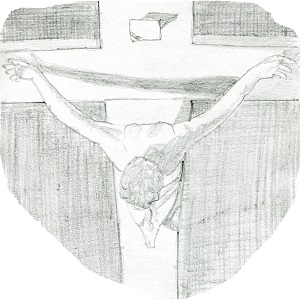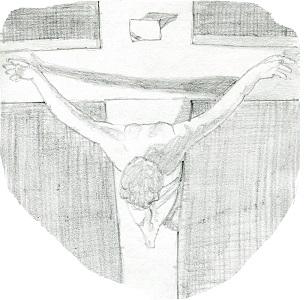

“So they said to him, “Who are you?” (John 8:25).
Nm 21:4-9; John 8:21-30
The dialogues in the fourth Gospel all ultimately focus on the identity of Jesus. This last of the four Gospels, composed toward the end of the first century, is the most theological and has the highest Christology, or explicit affirmation of the divinity of Jesus. It reflects a church entering the Graeco-Roman world and using some of the language and literary forms that will lead to the early controversies over doctrine and the creeds that emerge from the first councils.
It is also intensely mystical, showing a profound reflection on the personal transformation the church was experiencing as it realized that Jesus’ Incarnation was the bridge for believers to move through death to new life. Discipleship was not just membership in a religion but actual incorporation into Jesus as the new human being with a divine destiny, the new Creation that completes the original creation as God’s Beloved Community.
Jesus speaks of his passage from what is below to what is above. It requires a rebirth in faith by the power of the Holy Spirit, a transformation even Nicodemus could not grasp (John 3) because he was still living in the realm below, with a purely human understanding. Jesus uses the potent image of the time in the desert when the people had rebelled against God and suffered the deadly bites of serpents. Moses fashions a bronze image of a serpent and raises it on a pole. Those who “see” it, believe in the sign it represents, are healed.
This strange imagery of the “curse being the cure” becomes a central metaphor in the fourth Gospel. The “lifting up of the Son of Man” is the sign of the cross. Jesus makes passage from below to above by his death on the cross. Those who “see” and believe that his crucifixion, a curse, is the sign of just how much “God so loved the world that he gave his only begotten Son,” will be saved. Jesus’ “lifting up” is also his resurrection, ascension, Pentecost as his final breath and the birth of the church in water and blood from his side. We are transformed by participating in the life, death and resurrections of Jesus.
Our Lenten journey is meant to bring us to this moment of overflowing insight. “When you lift up the Son of Man, then you will realize that I AM” (John 8:28), a realization so stunning that it is judgment on those who do not believe, but salvation for those who do.
The Easter Vigil is the heart of Christian formation, a catechesis beginning with baptism that continues with a process called “Mystagogia,” the gradual absorption of the Scriptures and the Sacrament in the liturgy, the community celebrating its transformation in Christ. It is not a one-time experience but a way of life, friendship with God through Jesus and the Holy Spirit. This is the gift we have been offered.
Advertisement







